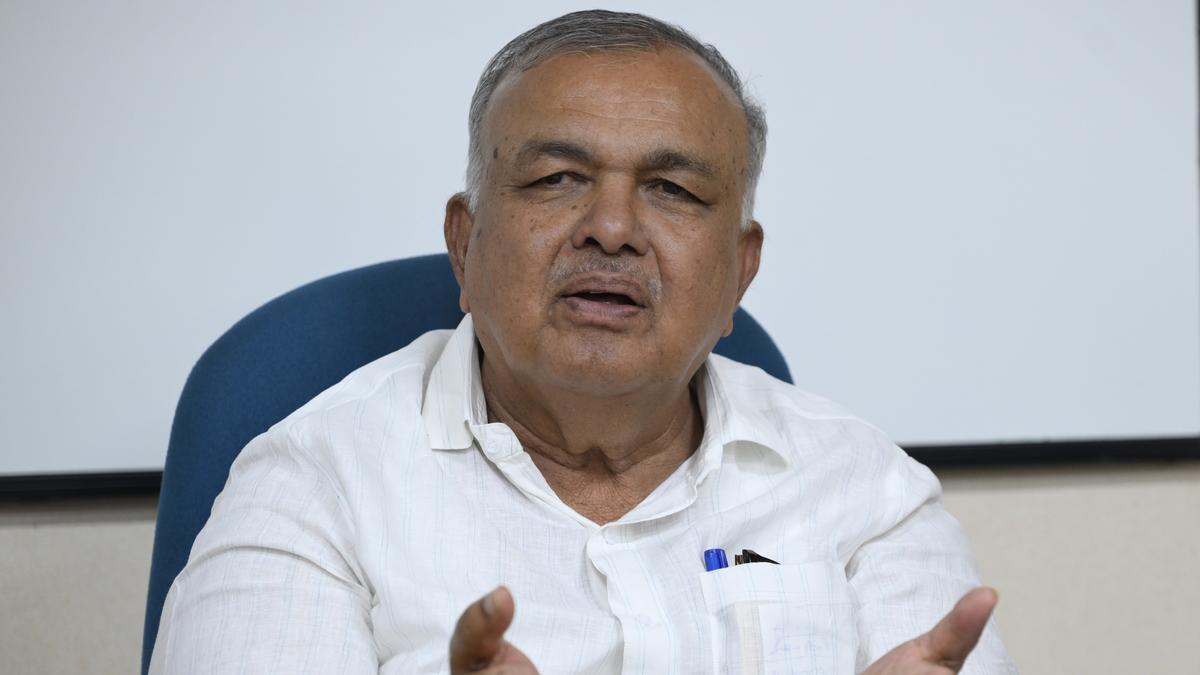
#THtalksBengaluru: Shakti pushed up daily ridership to one lakh, expansion of Majestic imperative, says Minister Ramalinga Reddy
The Hindu
“The Shakti scheme has resulted in a significant increase in bus ridership, with daily numbers rising from 80,000 to over 1,00,000. To address the bus shortage issue, the State planned to introduce 6,000 new buses, of which 3,900 have been delivered and the remaining 2,100 are on the way. The pandemic caused delay and cancellation of 3,800 buses, but they are now being reinstated alongside new additions,” said Transport and Muzrai Minister Ramalinga Reddy.
“The Shakti scheme has resulted in a significant increase in bus ridership, with daily numbers rising from 80,000 to over 1,00,000. To address the bus shortage issue, the State planned to introduce 6,000 new buses, of which 3,900 have been delivered and the remaining 2,100 are on the way. The pandemic caused delay and cancellation of 3,800 buses, but they are now being reinstated alongside new additions,” said Transport and Muzrai Minister Ramalinga Reddy.
Participating in The Hindu’s reader connect programme - #THtalksBengaluru - on Tuesday, he spoke about taking on the challenge of implementing the Congress party’s manifesto guarantee of the Shakti scheme, which provides free bus travel to women in government buses. The scheme has achieved its goal of empowering women, with a total of 2,66,72,12,266 women having travelled on State-run transport corporations so far.
Fielding a wide array of questions from readers of The Hindu, Mr. Reddy provided a comprehensive overview of the State’s transport policies, challenges, and ongoing initiatives. Central to Mr. Reddy’s discussion was the Shakti scheme, which is he said is more extensive in Karnataka compared to similar programmes in Tamil Nadu, Delhi, and Punjab. Of the State’s 26,000 buses, 21,000 now provide free travel to women.
Responding to concerns that the Shakti scheme was launched without a corresponding increase in bus numbers and loss to the revenue of RTCs, Mr. Reddy emphasised that transport corporations are designed to serve the community rather than generate profit. “Approximately 40% of the buses serve rural areas, often operating at a loss, similar to public sectors like health and education,” he said.
Mr. Reddy elaborated on improving the number of buses while being critical of the Central government’s FAME scheme. “Previously, funding was provided through the JNNURM scheme, which involved contributions from transport corporations, the State, and the Central government. With the discontinuation of this scheme, the Central government’s FAME scheme now supports the promotion of electric vehicles. However, funding for electric buses has decreased from ₹40 lakh to ₹15 lakh per bus,” he added.
In terms of infrastructure, he discussed several ongoing projects. The Kempegowda Bus Station in Bengaluru, which handles over 10,000 schedules daily, is undergoing expansion owing to increased traffic. The expansion project, initially funded through a ₹1,600 crore loan, aims to enhance the station’s capacity, he explained.
Mr. Reddy said the department has responded to requests from Namma Metro authorities by providing feeder services on key routes such as Whitefield, JP Nagar, and Jayanagar.













